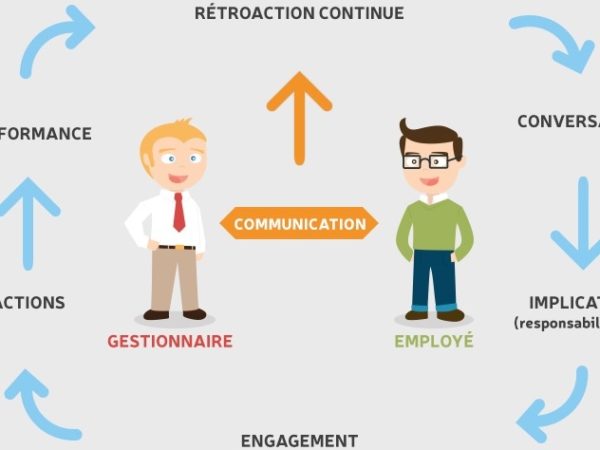Encouraging Employee Engagement Through Real-time Feedback
November 27, 2015In Employee Engagement

Employee performance evaluation time—a crucial moment in performance management for most companies—is coming up soon. But without downgrading the relevance of these year-end meetings, the Altrum team offers you additional ways to motivate your employees year-round, through real-time feedback.
WHAT IS REAL-TIME FEEDBACK?
It’s an approach whereby managers provide feedback to employees throughout the year, not just two or three times annually.
A Desjardins Group contact centre manager since 2001, Ginette Boucher believes it’s the best way to go. “Waiting a whole month before asking an employee how he or she is doing is far too long, because in that time, the employee can get discouraged,” says the Manager for Client Contact Centres and Specialized Groups.
Aside from strengthening teamwork, real-time feedback offers many clear advantages, such as:
- For managers: employee engagement, follow-up on objectives set at the beginning of the year, and being better prepared for performance evaluations
- For employees: ongoing support, work satisfaction, less anxiety with respect to performance evaluations and increased performance
BUILD THE CONVERSATION
Using real-time feedback requires managers to make themselves available on a regular basis. You may want to use open questions to make your employees feel like they are truly part of the discussion and ensure they can properly self-assess afterwards.
“Like I often tell my managers, you need to know your employees. Ask questions, take an interest in what motivates them, and don’t assume that you know what gets them enthusiastic,” Ms. Boucher advises.
When you know people really well, down to their deepest desires, you can help them find meaning in their work. That’s the key to engagement!
GET EMPLOYEES INVOLVED IN THE PROCESS
Every person is different. To ensure your employees feel fully engaged, make certain right from the get-go that they’re comfortable with the way your team operates, and that objectives are clear, realistic and measurable.
Remember that employees who take part in decisions are invariably more engaged. “Imposing objectives on someone is easy,” says Ms. Boucher, “but is it realistic? It’s much more motivating if people get to decide on the objectives they’ll be working toward, while you make sure that those goals represent an acceptable challenge,” she continues.
FOCUS ON CONCRETE ACTIONS
Employees who commit to concrete actions are much more likely to achieve results, especially if they choose their own goals. At the end of each conversation, try to summarize two or three of the actions proposed by determining when and how the employee plans to achieve them. From one conversation to the next, the employee will have tested different approaches and obtained results, “and then you can celebrate the successes,” adds Ms. Boucher.
Your presence and your support in helping employees along their career path will generate the energy and motivation needed so you can pursue fixed objectives together right from the start. And they’ll be grateful for it. “I appreciate the real-time approach because it has a snowball effect,” says Ms. Boucher. “If your employees feel important, they will make your clients feel the same, and that will lead to increased performance.”
How do you handle feedback? We look forward to reading your comments. We wish a productive year end!
Our solutions allow you to offer your team real-time feedback. To find out more, check out our case study.
Continue
to explore









